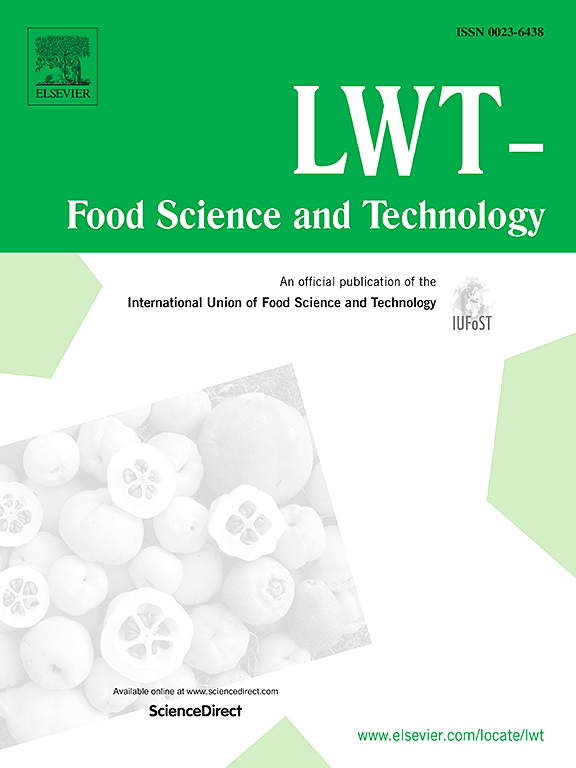基于植物化学成分和抗氧化活性的秋葵CIELAB颜色参数预测建模:一种非破坏性图像和RSM方法
IF 6
1区 农林科学
Q1 FOOD SCIENCE & TECHNOLOGY
引用次数: 0
摘要
秋葵(Abelmoschus esculentus)原产于非洲,因其营养价值、生物活性化合物和传统医药用途而成为全球种植的重要经济作物。在水果和蔬菜中,颜色是一种关键的视觉属性,可以与抗氧化活性和生物活性化合物(如酚类物质和类黄酮)的存在相关。因此,豆荚颜色的变化可能反映了其植物化学成分和感官品质的变化。利用响应面法(RSM)和Imagej软件,研究了10种秋葵材料中生物活性化合物(TPC、TFC和AOA)与颜色特征(L∗、a∗和b∗)之间的关系。方差分析(ANOVA)证实了所建立模型的显著性,L∗、a∗和b∗的决定系数(R2)分别为0.89、0.82和0.91。颜色特征与生物活性化合物之间的密切关系表明,基于颜色的建模可以作为一种简单而经济的工具来选择具有增强植物化学含量的秋葵基因型。本文章由计算机程序翻译,如有差异,请以英文原文为准。
Predictive modeling of CIELAB color parameters in okra accessions based on phytochemical composition and antioxidant activity: A non-destructive Imagej and RSM approach
Okra (Abelmoschus esculentus), native to Africa, is an economically important crop cultivated globally for its nutritional value, bioactive compounds, and traditional medicinal uses. In fruits and vegetables, color is a key visual attribute that can be correlated with antioxidant activity and the presence of bioactive compounds such as phenolics and flavonoids. Changes in pod color may therefore reflect variations in their phytochemical content and organoleptic quality. The objective of the present study was to investigate the relationship between the bioactive compound (TPC, TFC, and AOA) and color features (L∗, a∗ and b∗) of ten okra accessions using response surface methodology (RSM) and Imagej software, as a nondestructive, fast, and fairly accurate method. Analysis of variance (ANOVA) confirmed the significance of the developed models, with determination coefficients (R2) of 0.89, 0.82, and 0.91 for L∗, a∗, and b∗ responses, respectively. The strong relationship between color features and bioactive compounds suggests that color-based modeling can serve as a simple and cost-effective tool for selecting okra genotypes with enhanced phytochemical content.
求助全文
通过发布文献求助,成功后即可免费获取论文全文。
去求助
来源期刊

LWT - Food Science and Technology
工程技术-食品科技
CiteScore
11.80
自引率
6.70%
发文量
1724
审稿时长
65 days
期刊介绍:
LWT - Food Science and Technology is an international journal that publishes innovative papers in the fields of food chemistry, biochemistry, microbiology, technology and nutrition. The work described should be innovative either in the approach or in the methods used. The significance of the results either for the science community or for the food industry must also be specified. Contributions written in English are welcomed in the form of review articles, short reviews, research papers, and research notes. Papers featuring animal trials and cell cultures are outside the scope of the journal and will not be considered for publication.
 求助内容:
求助内容: 应助结果提醒方式:
应助结果提醒方式:


